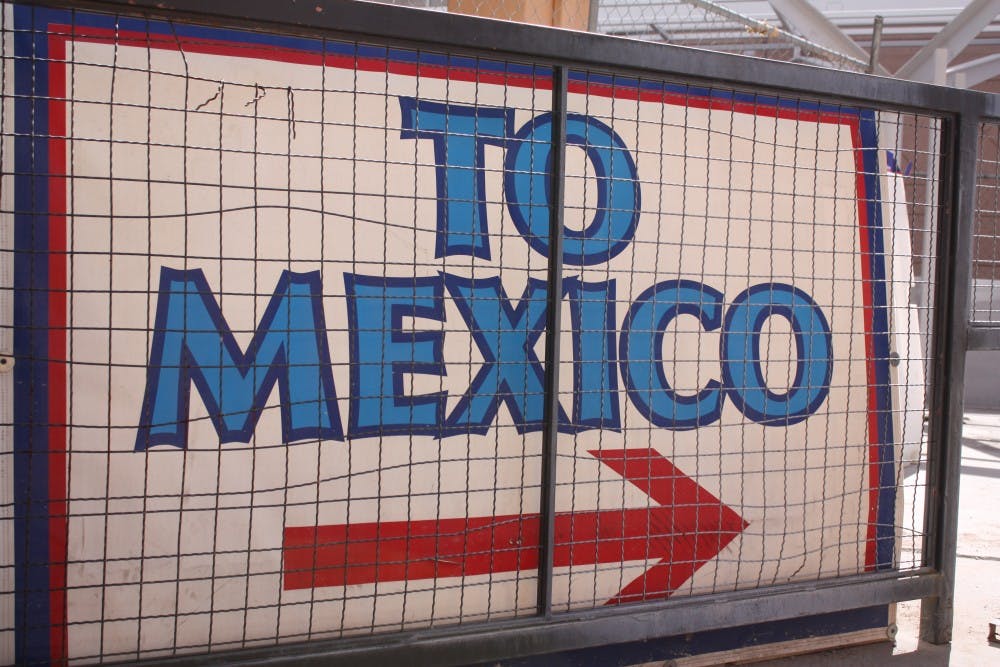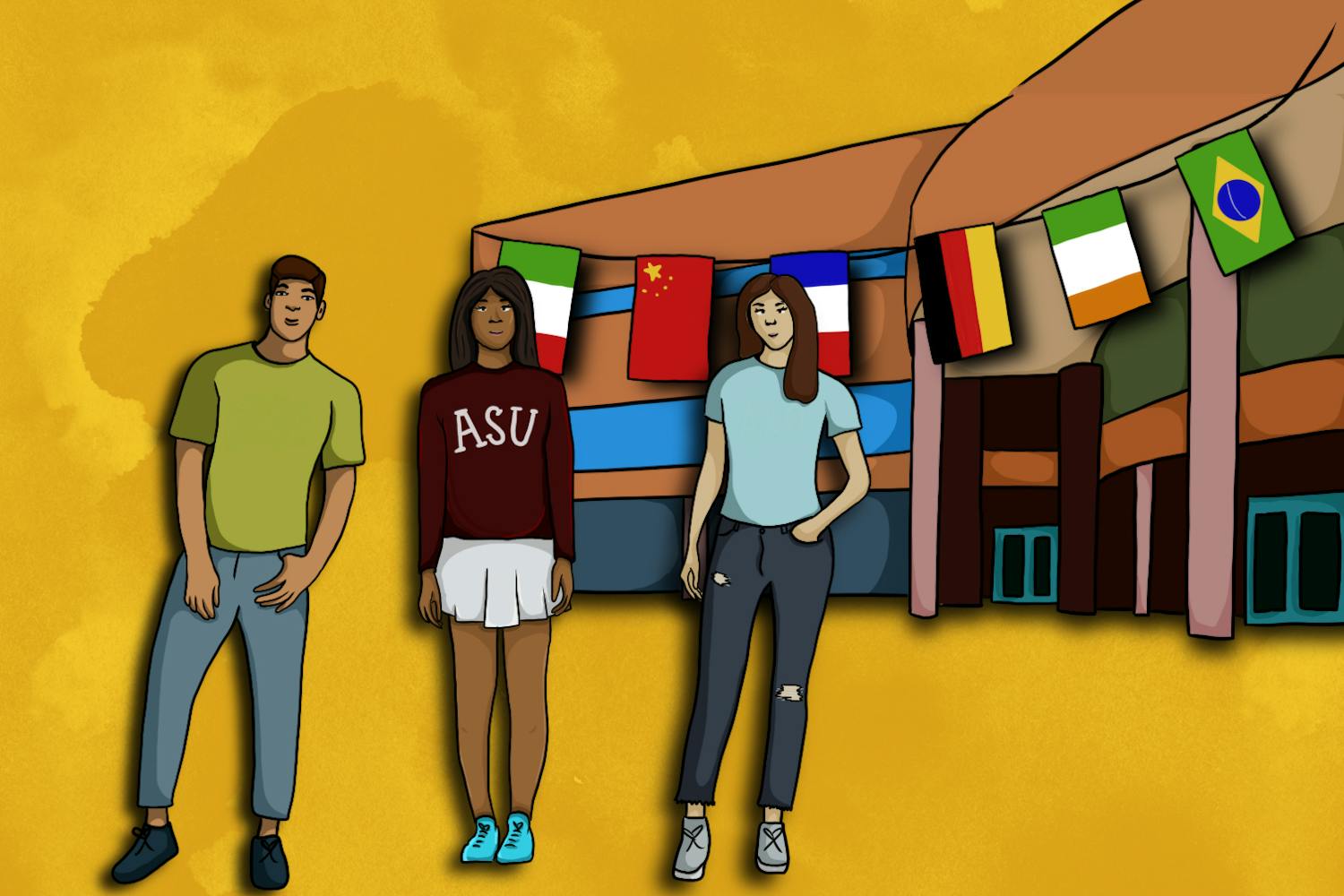 A slow U.S. economy has deterred number of immigrants crossing over. Photo by Shawn Raymundo
A slow U.S. economy has deterred number of immigrants crossing over. Photo by Shawn RaymundoWhen the Arizona State Legislature passed Arizona’s Support Our Law Enforcement and Safe Neighborhoods Act in 2010 — otherwise known as Senate Bill 1070 — Arizona became a pariah to the Federal Government as well as neighboring states such as California. The law changed the perception of illegal immigration from outside states looking in as it also created an upheaval of in-state protests from citizens.
The controversial law signed by Gov. Jan Brewer on April 23, 2010, gave many believers of the law the impression that it would fix the state’s economy and drive out illegals from the state. Conversely, the recent rise in Mexico’s economy has briefly resolved the state’s “problem” more than SB 1070 has.
The stock market crash in late 2008 caused the worst economic downturn in the U.S. since the Great Depression. However, it has also been the reason for a drop in illegal immigration from Mexico, says Tom Rex, research administrator for the W.P. Carey School of Business.
The decrease only represents illegal immigrants, not all immigration, he says. The U.S.’s poor economy has both deterred illegal immigration and altered the perception of Land of Opportunity — at least for the time being.
“Ultimately when a person decides to move they have to have a job at the other end to make that move,” Rex says. “So if a person living in Mexico heard how bad the economy is here and understands that it may be very difficult to find work, then chances are that person will postpone trying to make the move until the economy improves.”
While the U.S. economy is still in slow recovery, Mexico’s economy has experienced an increase in manufacturing and energy industries, says Margie Emmermann, Executive Director of the Arizona-Mexico Commission for the Arizona Governor’s Office.
“Mexico is just growing, the opportunities are booming,” she says. “Every time that I travel (there) I see a lot of growth happening, a lot of business expanding.”
 Expanding business in Mexico has led many potantial immigrants to remain and find opportunity in their homeland.
Expanding business in Mexico has led many potantial immigrants to remain and find opportunity in their homeland.Photo by Shawn Raymundo
The economic growth in Mexico and the stagnant job creation in the U.S. mean that fewer people are making the dangerous trek across the border and the Sonoran desert to find work.
According to the U.S. Border Patrol statistics, the 2011 fiscal year saw the lowest amount of reported illegal alien apprehensions.
However, the number of apprehensions in Arizona was still higher than all other border states including California, New Mexico and Texas.
Evelyn Cruz, professor of immigration law at the Sandra Day O’Connor College of Law, says politicians thought the harsh Arizona desert landscape would deter border crossings.
She says that Texas and California have much tighter security and larger cities near the border, which funnels illegal immigrants into Arizona.
According to the same statistics, Arizona had 50 percent of the apprehensions in 2007; 48 percent in 2008; in 2009 it was 47.7 percent; 51 percent in 2010; and then starkly dropped off to 41.8 percent in 2011.
Victor Brabble, a spokesman for U.S. Customs and Border Protection in Tucson, Ariz. says that Mexico’s growing economy may contribute to the decrease in illegal border crossings.
However, the Border Patrol primarily attributes the drop in apprehensions to an increase in enforcement with manpower, technology and infrastructure.
The U.S. Border Patrol instituted a targeted messaging system in the past few years, Brabble says. The system, which increases communication efforts between officers and Mexican media near the border, reminds Mexican citizens of the increase in enforcement.
“When we see a drop in numbers, that’s actually a good thing because the high presence that we have, we would like to believe, is getting the word down south that you know this is not the place to cross,” Brabble says.
Targeted messages are sent out to newspapers and radio stations in the Mexican states with the highest concentration of arrests. Messages often include warnings about the harsh desert landscape, dangerous wildlife and unscrupulous drug smugglers.
“Our goal is to influence the atmosphere, to influence those decisions that are made by folks before they attempt to cross illegally into the U.S.,” Brabble says.
Emmermann says Gov. Jan Brewer and Gov. Guillermo Padres Elias of Sonora, Mexico, meet twice a year to discuss job creation for both sides of the border as well as issues like border crossing. Arizona is leading the way in sustainable energy practices like solar power, but Mexico is also looking to tap into those resources from the yellow star above, according to a recent Fox News Latino report.
 Increase in border infrastructure has also led to less Mexican citizens to make the cross.
Increase in border infrastructure has also led to less Mexican citizens to make the cross.Photo by Shawn Raymundo
Emmermann adds that the two governors are working together to make not only the solar industry bigger for both sides but aerospace and mining as well. The two governors have been discussing job opportunities and growth in those industries, she says.
SB 1070 — a law that has faced federal examination and scrutiny from liberals — has undergone drastic changes after the Supreme Court ruled in June that only one of the provisions stands as constitutional. It now only allows Arizona’s law enforcement officers the right to seek citizenship documentation from someone whom they suspect to be in the country illegally.
However, such inquiries may only occur during a lawful stop of the person, such as when they commit a crime. And according to the National Conference of State Legislatures, only Immigration and Customs Enforcement and U.S. Customs and Border Protection can determine if the person is in the county illegally.
According to the agency’s website, ICE is a branch of the U.S. Department of Homeland Security which investigates criminal and civil crimes regarding the border and immigration.
The largest drop in apprehensions of illegal immigrants in Arizona occurred between 2010, when the state legislature approved SB 1070, and 2011.
However, people should not immediately associate SB 1070 with the drop in Mexican immigration, Cruz says.
“The treatment of undocumented immigrants residing in Arizona doesn’t equate to whether or not they’ll use those corridors to enter into the United States,” she says. “Also the point of SB 1070 wasn’t to deter the entry, it was to try to deter the settlement in Arizona.”
Cruz argues that immigration reform is not something that can be resolved through state legislation. She says it is a federal issue and needs to be unanimously agreed on. Days after the law was signed, states and citizens from all throughout the country were boycotting Arizona.
“You have extremes and it’s an issue that brings a lot of emotional quotients but at the end of the day they have to come up with a compromise,” Cruz says. “SB 1070 is not a solution. It’s just an attempt at shifting the problem from one context into another.”
Reach the writer at sraymund@asu.edu or follow him @ShawnFVRaymundo




